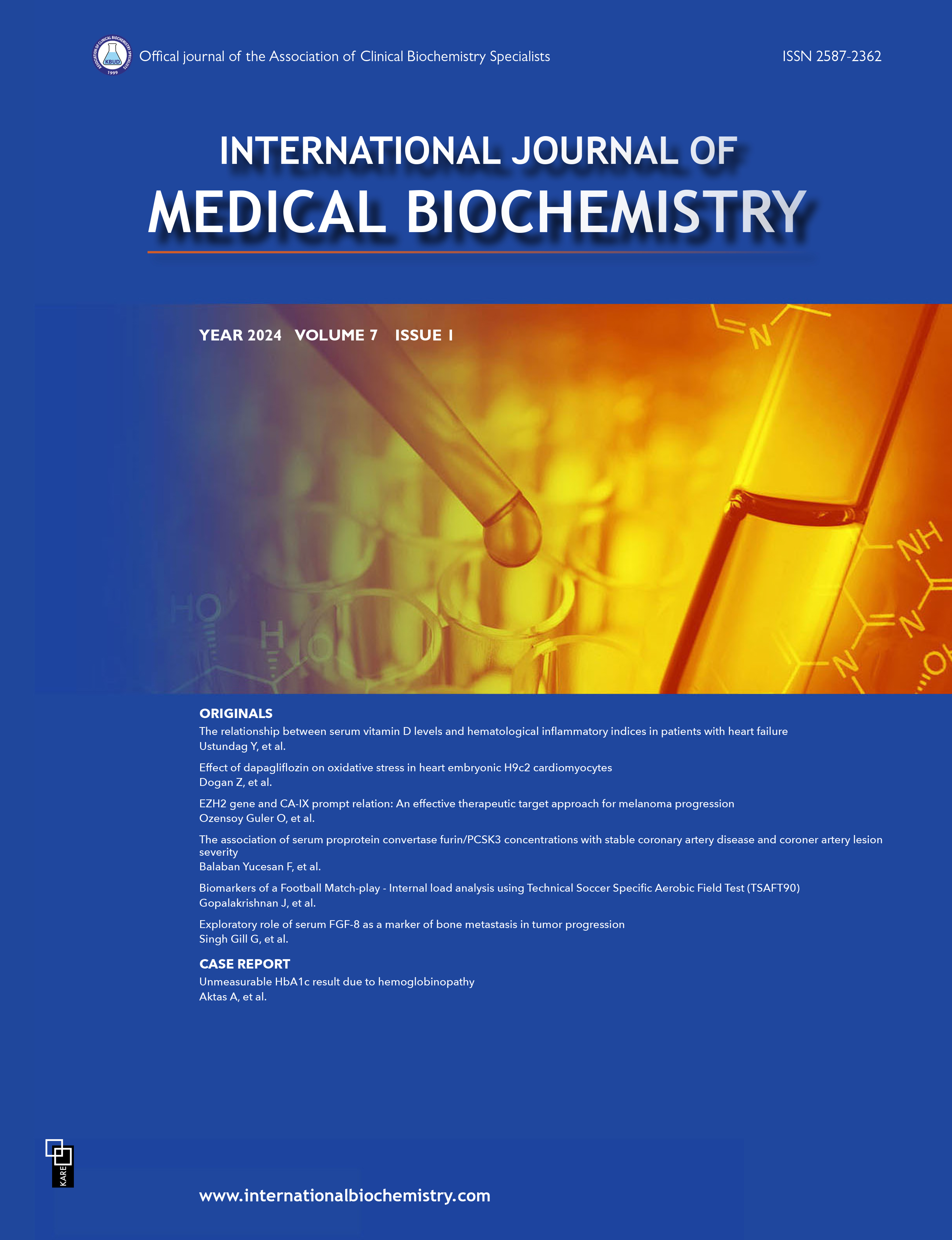Angiostatin levels in systolic heart failure patients with chronic kidney disease
İsmail Erturk1, Erdim Sertoglu2, Taner Ozgurtas2, Fatih Yesildal2, Ramazan Acar1, Birol Yildiz1, Fevzi Nuri Aydin2, Galip Büyükturan1, Kenan Sağlam11Department of Internal Medicine, University of Health Sciences, Gulhane Training and Research Hospital, Ankara, Turkey2Department of Medical Biochemistry, University of Health Sciences, Gulhane Training and Research Hospital, Ankara, Turkey
INTRODUCTION: Heart failure (HF) with reduced ejection fraction (HFrEF) is defined as an ejection fraction (EF) of less than 40%. An EF of 40% to 50% is known as HF with mid-range EF, which is considered a subgroup of HF with preserved ejection fraction, rather than HFrEF. Angiostatin inhibits angiogenesis and the proliferation of mesenchymal stem cells. Though many studies in the literature have focused on the effect of angiostatin on endothelial cell apoptosis, studies about angiostatin levels in HF patients are limited. The aim of this study was to evaluate the angiostatin level in systolic HF patients with chronic kidney disease (CKD).
METHODS: A group of 69 individuals, consisting of patients with a diagnosis of systolic HF with CKD (n=29) and healthy (n=40) subjects, was included in the current study. Serum angiostatin, plasma N-terminal pro-brain type natriuretic peptide, and creatinine levels were assessed, and transthoracic echocardiography was performed.
RESULTS: The angiostatin level of the patient group was significantly higher than that of the control group (median: 163 ng/mL [25th75th interquartile range: 48-336 ng/mL] and median: 58.14 ng/mL [25th75th interquartile range: 18.1- 167 ng/mL], respectively; p=0.02). The angiostatin level of HF patients receiving beta blocker therapy was significantly higher than that of the HF patients who were not taking a beta blocker (105.3 ng/mL [50.7-220.7 ng/mL] and 70.4 ng/ mL [35-224 ng/mL], respectively; p=0.02).
DISCUSSION AND CONCLUSION: To the best of our knowledge, this study is the first to examine this subject. Angiostatin may be an important marker in systolic HF patients with CKD. The use of a beta blocker may inhibit angiogenesis and induce apoptosis in HF patients with CKD. Further studies are required.
Corresponding Author: İsmail Erturk, Türkiye
Manuscript Language: English



















